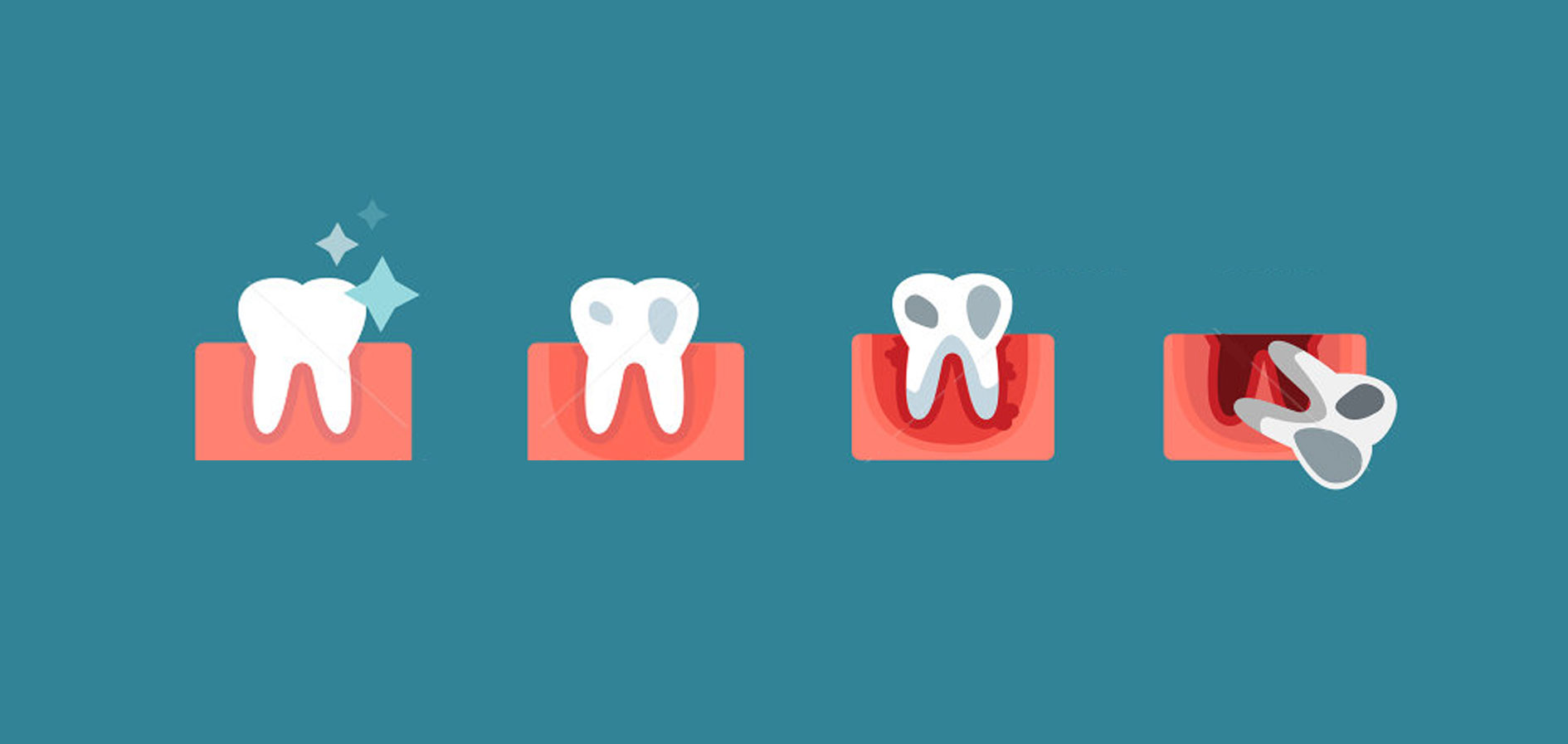- Super User
- Services
- Hits: 168
General Dentistry
We provide comprehensive general dentistry services to keep you healthy and smiling. Our dentists strongly encourage long-lasting dental health by regular dental checkups every six months. During your checkup, your general dentist will examine your teeth and overall oral health after a healthy cleaning from your hygienist. With regular dental visits, we can prevent common dental health problems such as tooth decay or periodontal disease by monitoring your teeth and gums. Good oral health can also prevent dental procedures such as cavity fillings, root canals and tooth extractions.
At Viva Dent, we offer a full range of affordable dental services consisting of general, cosmetic, periodontal and restorative dentistry as well as orthodontics.There are many general and specialized services available at our locations. Below is a small portion of the most recognizable general dental services and terms. They include, but are not limited to the following:
- Fillings
Fillings are the restoration of lost tooth structure with metal, porcelain, or resin materials. There are many different types of materials used for fillings. You and your dentist can discuss the options and choose the right tone for you. Most are durable and will last you many years, but they are not permanent and may need to be replaced in the future.
- Silver Amalgam
Silver Amalgam is a common filling material used to repair cavities. The material, also known as “silver fillings,” contains mercury in combination with silver, tin, copper, and sometimes zinc. No dental restoration is permanent due to the difficult environment of the mouth and the everyday wear and tear all restorations take.
- Resin Amalgam
Tooth-colored restorative material composed of plastic with small glass or ceramic particles, usually “cured” or hardened with filtered light or chemical catalyst. Resin is a great cosmetic alternative to silver amalgam fillings. Typically composite fillings are used for chipped teeth, closing space between two teeth, cracked, broken, decayed, or worn teeth. Most are durable and will last you many years, but they are not permanent and may need to be replaced in the future. No dental restoration is permanent due to the difficult environment of the mouth and the everyday wear and tear all restorations take.
- Comprehensive Dental Exam
The exam is performed at your initial dental visit and at following check-up exams that your dentist or hygienist will perform. Do not let the name General Dental Exam fool you, this is a comprehensive dental exam that will include all of the following main points: Digital X-Rays, Oral cancer screening, Gum disease screening, Examination for tooth decay, Examination of previous work done (existing restorations)
- Periodontal Exam/Scale & Polish
Always available to maintain your oral health and confidence. During a checkup, your dental hygienist will thoroughly clean, polish and remove the hardened plaque (or tartar) from your teeth. Your dentist will then examine your teeth and gums for signs of tooth decay, gum disease and other oral health problems. Includes oral cancer screening check and overall up to date assessment of the general health of your teeth and gums. May also include x-rays to be taken when clinically necessary. If any issues are discovered, your dentist will offer advice on how to improve your oral health. More severe cases may require additional dental treatments.
- Crowns/Caps
A Crown/Cap is the portion of a tooth above the gum line that is covered by enamel. The artificial cap can be made of porcelain, composite, or metal and is cemented on top of the damaged tooth. Porcelain is the most popular choice because it is tooth colored and resembles your natural teeth. Much like fillings, crowns are highly durable and will last you many years, but they may need to be replaced in the future. Typical reasons for a crown include: a tooth that has had a root canal, decayed teeth, fractured or large fillings, broken teeth, or for cosmetic enhancement.
- Bridges
Bridges are used to restore missing teeth by attachment to adjacent teeth. They are cemented or bonded to supporting teeth or implants to replace one or more missing teeth. These are also called a fixed partial denture. Just like fillings, there are many types of bridges and you and your dental team will discuss the best options for your case. The most popular bridge is made of porcelain because it most resembles your natural teeth. They are very durable and will last you many years, but like other dental restorations they may need to be replaced. Bridges are chosen to fill in spaces of missing teeth, to help restore your smile, as an alternative to removable dentures, or to help retain normal chewing and speaking.
- Dental Implants
Implants are typically done to replace a single missing tooth, but if you have several missing teeth you may still be a candidate. The results are more permanent, maintain your bone health, and look more realistic. A small titanium screw is surgically placed into the upper or lower jawbone where a tooth is missing. It serves as the tooth root and anchor for the crown, bridge, or denture that is placed over it. Like other restoration they are very durable and strong and will last many years, but may need to be re-tightened or replaced in the future.
- Porcelain Inlays or Onlays
When more than half of the tooth’s biting surface is damaged a dentist will often use inlays/onlays. Inlays/onlays can be made of porcelain, gold, or a composite resin. These pieces are bonded to the damaged area of the tooth. An inlay (which is similar to a filling) is used inside the cusp tips of the tooth. An onlay is a more substantial reconstruction (similar to the inlay), but extending out over one or more of the cusps of the tooth.
Inlays/onlays require two appointments to complete the procedure. During the first visit, the filling being replaced or the damaged or decaying area of the tooth is removed and the tooth is prepared for the inlay or onlay. To ensure proper fit and bite, an impression of the tooth is made by the dentist and sent to a lab for fabrication. The dentist will then apply a temporary sealant on the tooth and a subsequent appointment will be scheduled.
At the second appointment, the temporary sealant is removed. Then the doctor makes sure that the inlay/onlay fits correctly. If the fit is satisfactory, the inlay/onlay will be bonded to the tooth with a strong resin and polished for a smooth finish.
- Dentures
A denture, or a complete denture as it is often called, is an appliance that is inserted in the mouth that replaces natural teeth and provides support for the cheeks and lips. Dentures and partials are removable replacements for missing and extracted teeth that closely resemble natural teeth and gums. We understand the emotional effect of the appearance of your smile, especially when you have teeth missing, so going even a day without a denture or partial is very uncomfortable.
Two types of dentures are available: Complete and Partial.
• Complete Dentures: are used when all the teeth are missing.
• Partial Dentures: are used when some natural teeth remain.
- Extractions
If you have a tooth that is severely damaged, it may need to be removed. Extraction is necessary when decay or an abscessed tooth is so severe that no other treatment will cure the infection. Removing the tooth will help keep infection from spreading to other areas of your mouth. Your dentist will give you a local anesthetic to numb the area where the tooth will be extracted. If you have several teeth that need to be removed, your dentist will often give you a general anesthetic where you will be sedated during the procedure.
In either case, our doctors will make sure that you are as comfortable as possible before, during and after the procedure. After the tooth is removed, you may need stitches and a few short days of recovery. Upon healing, the extracted tooth can be replaced with a dental implant, denture or bridge.
- Nitrous – N2O
A gas (also called laughing gas) used to reduce patient anxiety. Many of our offices offer this type of sedation to help reduce the anxiety of going to the dentist. Nitrous oxide works by producing an analgesic, anxiolytic, and anesthetic effect. It is commonly used in pediatric dentistry to relax children and decrease their fear of dental procedures. Nitrous oxide is also used for patients with underlying psychiatric conditions or patients with mental retardation.
- Root Canal
Endodontics (Root Canal Therapy): Root canal therapy is necessary when a tooth is infected and will not heal on its own. Symptoms include pain when biting and chewing, sensitivity with hot and cold, and constant aching and discomfort. A lot of people are intimidated when they hear the word “root canal”, but at our office there is no need to be afraid. Most general dentists will refer you to an Endodontic specialist, and in some complex cases we may need to refer you to an Endodontic too, but the majority of the time we can take care of this problem for you. This will save you time and extra doctor’s visits.
Root Canal Procedure: The root canal system is composed of nerves and blood vessels that supply nutrients and feeling to the tooth itself. These structures are housed in a small chamber, or canal, within the tooth. When these structures are disrupted due to infection or trauma, they must be removed; the canal area is then cleaned and sealed.
Symptoms or signs that a root canal is needed: severe pain, sensitivity to cold and hot, abscess, and in some cases no symptoms at all exist.
- Sealants
A thin, clear or white resin substance that is applied to the biting surfaces of teeth to prevent decay. A sealant is most often applied when a permanent tooth first erupts or comes into a child’s mouth. Though brushing and flossing can get rid of the food particles and any plaque from your teeth, they can't always get everything out of the tiny spaces between your teeth and especially your back teeth. Dental sealants protect these vulnerable areas from tooth decay by "sealing" out the food that could get stuck there. This is when sealants are needed most because there is a low contamination of bacteria in the grooves of their teeth. It is also important to have sealants applied to your children’s teeth due to lack of interest in brushing at a young age.
- Gum Disease – Periodontal Disease/Gingivitis/Periodontitis
This is a serious bacterial condition that damages and destroys the gum tissue and bone that support your teeth. Untreated periodontal disease is a leading cause of tooth loss among adults. Except in its earliest stages, periodontal disease cannot be completely cured. It can be controlled and managed.
Current research shows some alarming new information about the effects of periodontal disease. Many studies, including several published in the Journal of Periodontology, confirm that people with periodontal disease are at a greater risk for other serious illnesses. That is because infected gums release significantly higher levels of bacteria into the bloodstream that then spread to other organs in the body.




